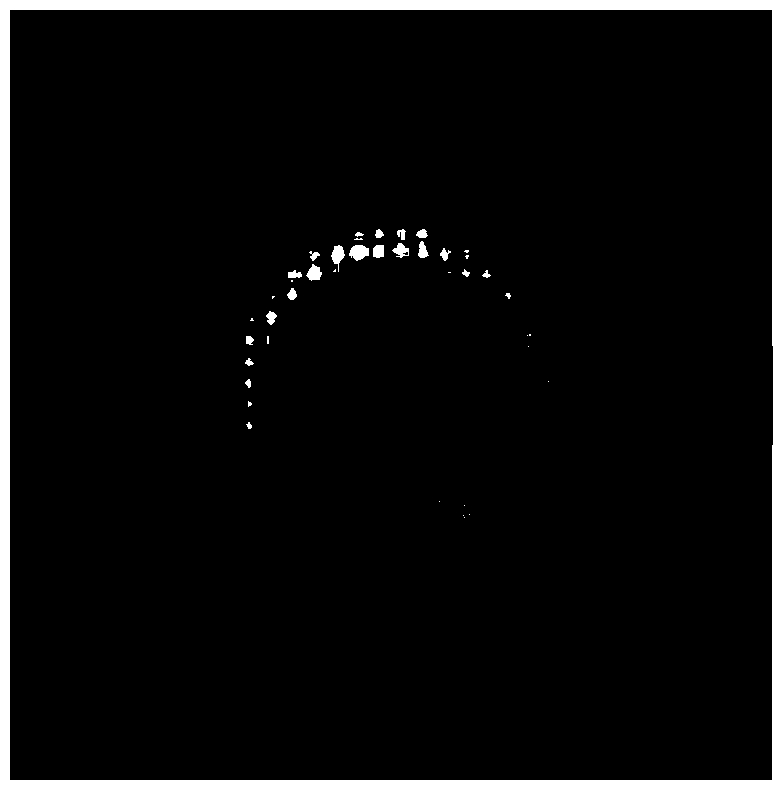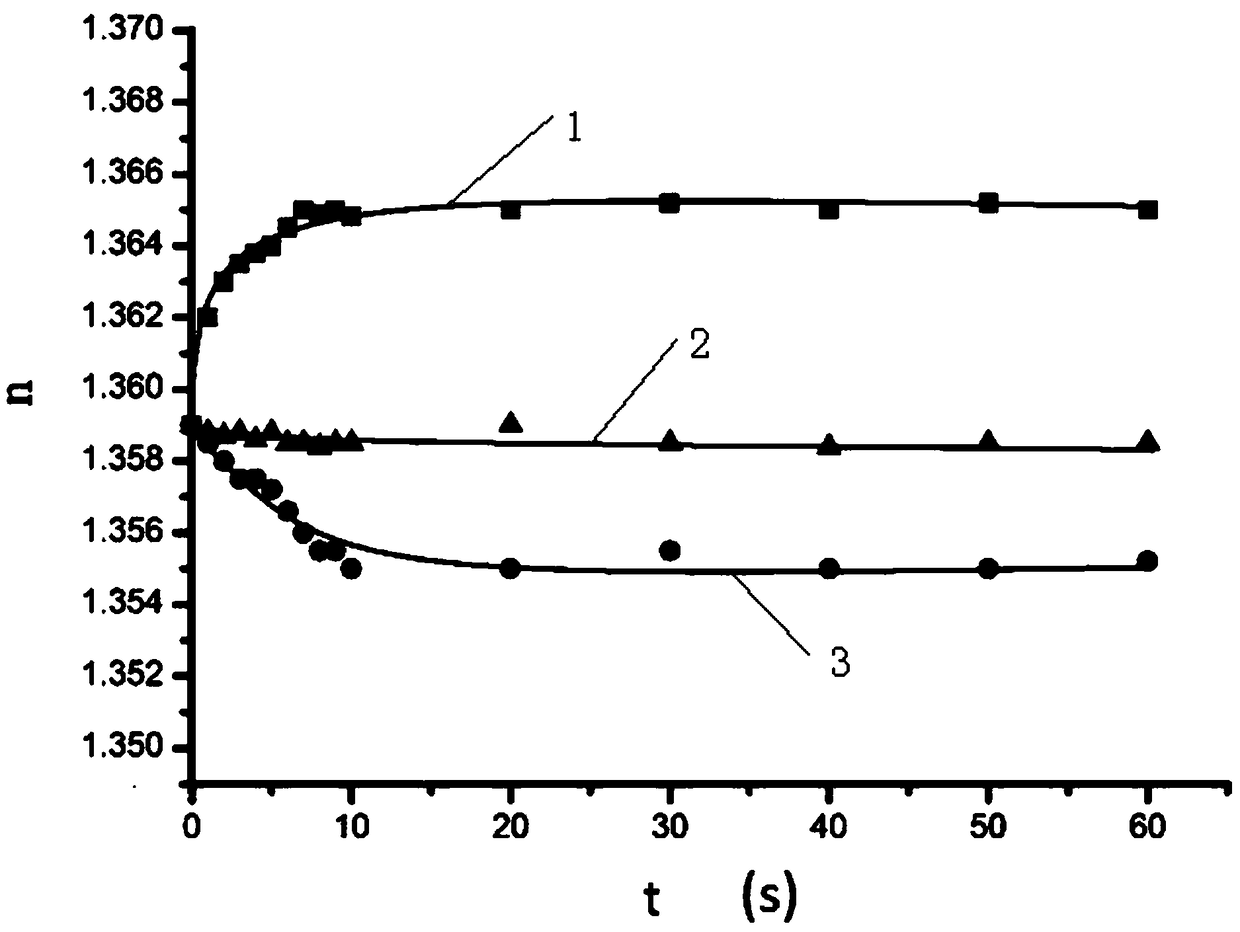Antigen-antibody Reaction Determination Method Based on Microlens Imaging
A technology of antigen antibody and determination method, which is applied in the direction of phase influence characteristic measurement, etc., to achieve the effect of easy operation and simple determination method
- Summary
- Abstract
- Description
- Claims
- Application Information
AI Technical Summary
Problems solved by technology
Method used
Image
Examples
Embodiment 1
[0047] In this embodiment, one end is a spherical surface, and the other end is a flat microlens imaging technology to measure the reaction between ODA antibody and ODA serum: a silicon dioxide microlens is placed in a hole of a multi-well plate, and then ODA serum is dropped into the microlens. Immersion, at this time, use a digital imaging system to image the microlens illuminated by parallel light, and use special image analysis software to measure the radius R of the microlens and the radius R of the bright spot in the image center b . Then drop in the antibody solution, take a picture of the microlens every two seconds immediately after the drop, obtain 50 images of the microlens within 100 seconds, and measure the radius R of the central bright spot in each image b , together with the radius R of the microlens, use Equation (2) to calculate the refractive index of the solution, take the average of the refractive index values from the 10th second to the 50th second, and...
Embodiment 2
[0049] In this example, the reaction between CRP antibody and CRP antigen is measured by microsphere microlens imaging technology: a polystyrene microlens is placed in a porous plate, and then the CRP antigen solution is dropped to immerse the microlens. At this time, digital imaging is used to The system imaging images the microlens illuminated by parallel light, and uses special image analysis software to measure the radius R of the microlens and the radius R of the bright spot in the image center b . Then drop in the antibody solution, take a picture of the microlens every second immediately after dropping in, obtain 100 images of the microlens within 100 seconds, and measure the radius R of the central bright spot in each image b , together with the radius R of the microlens, use equation (1) to calculate the refractive index of the solution, take the average of the refractive index values from the 10th second to the 80th second, and then quantitatively determine the ant...
Embodiment 3
[0051] In this embodiment, one end is a spherical surface, and the other end is a flat microlens imaging technology to measure the reaction of interferon antibody and its antigen: a polystyrene microlens is placed in a porous plate, and then the interferon antigen solution is dropped into the microlens. Immersion, at this time, use the digital imaging system to image the microlens illuminated by parallel light, and use special image analysis software to measure the radius R of the microlens and the radius R of the bright spot in the image center b . Then drop in the antibody solution, take a picture of the microlens every second immediately after dropping in, obtain 40 images of the microlens within 600 seconds, and measure the radius R of the central bright spot in each image b , together with the radius R of the microlens, the curve of the solution refractive index changing with the antigen-antibody reaction process (such as Figure 4 shown), and then use the reaction balan...
PUM
 Login to View More
Login to View More Abstract
Description
Claims
Application Information
 Login to View More
Login to View More - R&D
- Intellectual Property
- Life Sciences
- Materials
- Tech Scout
- Unparalleled Data Quality
- Higher Quality Content
- 60% Fewer Hallucinations
Browse by: Latest US Patents, China's latest patents, Technical Efficacy Thesaurus, Application Domain, Technology Topic, Popular Technical Reports.
© 2025 PatSnap. All rights reserved.Legal|Privacy policy|Modern Slavery Act Transparency Statement|Sitemap|About US| Contact US: help@patsnap.com



